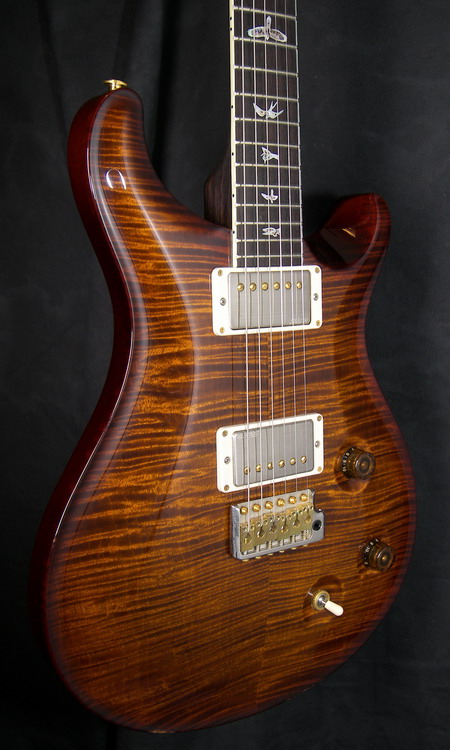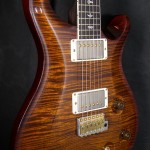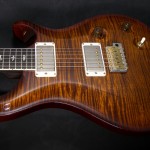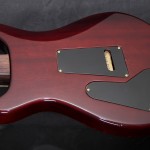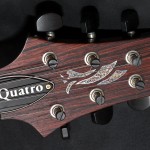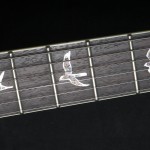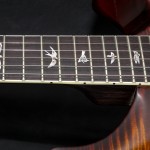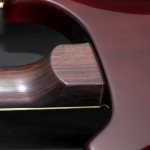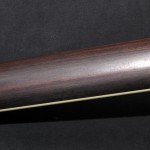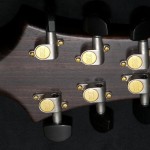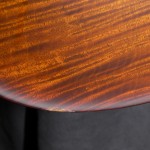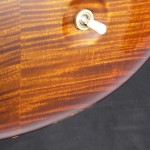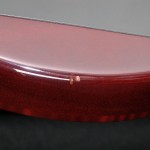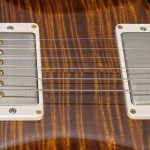The fourth version of the Modern Eagle, originally introduced in 2004, offers further justification of this, not least that it’s the first PRS to feature the 53/10 humbuckers, the latest in the line of new- generation pickups (which also includes the 57/08 and 59/09), inspired by the classic Gibson PAF. They use coil wire created on the machine that supplied Fender and Gibson back in the ’50s.
Smith’s reference point is not his contemporary competition; it’s the classic guitars of yesteryear and many believe that, more than any other production maker, he’s close to nailing the sound of those ‘golden era’ guitars.
But it’s not about replication – a PRS guitar is different from a vintage Fender or a Gibson, and for some it’s more desirable.
Yet Paul Reed Smith remains very guarded about these new pickups and the most we could ascertain is that the 53/10 uses “exactly the same wire from the same machine that Fender put on 1953 Tele pickups. The 53/10 and 57/08 have the same output; the 53/10 has a slightly sweeter high end”.
Another difference present on the Quatro is the dalbergia neck and fingerboard (the dalbergia genus includes numerous rosewood species). “We started to play around with a whole bunch of dalbergias – rosewoods,” says Smith.
“It turns out that God grows trees in India, and we were able to get a supply of extraordinary wood, which we ended up using on the Quatro. Technically, it’s an Indian rosewood, but not all Indian rosewood is created equal.”
Shape-wise, the new ‘pattern’ neck profile – “very close to a wide-fat but it’s a little slimmer [in depth],” says Smith – feels slightly less ‘V’-shaped than a couple of the older wide-fats we compared it to, but the shoulders are still slender.
It’s still got a relatively thick neck from back to front (approximately 21.5mm at the first and 23.6mm at the 12th), but it certainly doesn’t feel overly big or clubby.
We have grained ivoriod binding around the fingerboard edges, shaped beautifully with a comfortable inward curve, and the top edge is typically rounded. The fretwork is superb – a larger-than-standard ME/513 gauge (2.7mm wide x 1.37mm high, according to PRS specs) – and the fret ends sit over the binding.
In fact, the binding is so well done that you don’t notice it, aside from the colour contrast with the chocolate brown neck and fingerboard.
The feel of the neck is different to a gloss-finished standard one too – it’s slightly open-grained, but feels like it’s been burnished. “It’s got finish in the grain,” confirms Smith. “It’s like a marine jelly that we rub in. It fills in the grain, then we sand it down and buff it up.”
Aside from the new pickups, we have another new-to-PRS feature. That coil-split switch on the tone control has two additional resistors. Previously, in coil-split mode, the slug coil was shorted to ground, leaving just the screw coil in circuit.
This new circuit “doesn’t completely cancel the slug coil,” explains Smith. “It sort of three-quarter coil cancels. It allows some of the other [slug] coil through. It’s also slightly hum-cancelling. All the guitars have this now, even if they’re using the old pickups,” he adds.
There’s also a treble bleed capacitor on the volume control, retaining highs as the volume is reduced.

